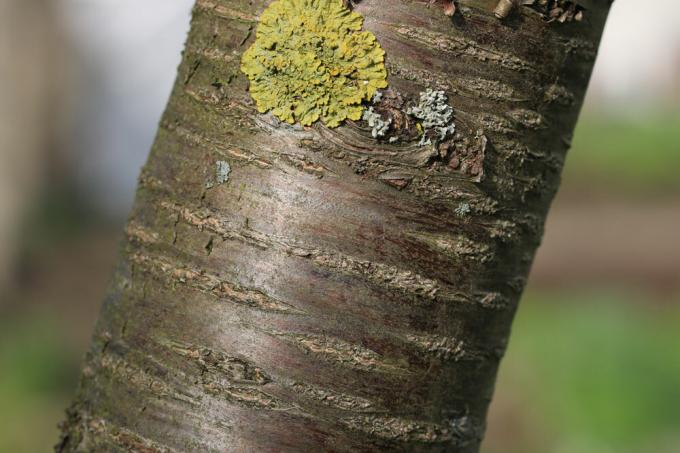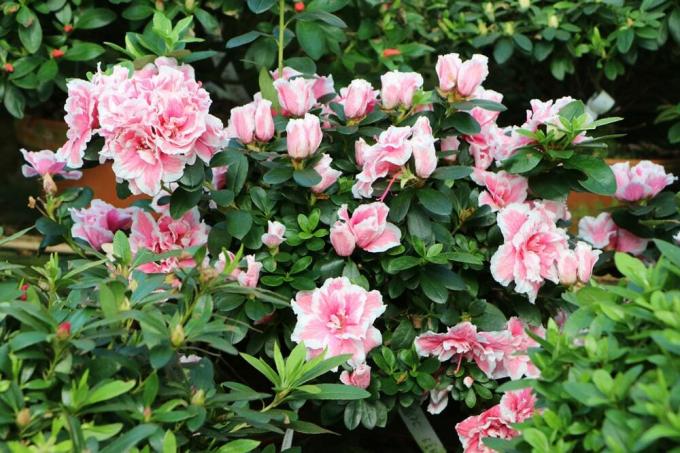

Table of contents
- Location
- soil and substrate
- Planting time, watering and fertilizing
- growth, care and pruning
- flowers, leaves and fruits
- pests and diseases
- frequently asked Questions
- Worth knowing about the ball cherry in brief
The Prunus fruticosa Globosa to German ball cherry is also called steppe cherry or dwarf cherry. The spherical cherry is characterized by its low demands on soil and environment, its robustness and easy care. At the same time, it delights with a beautiful, white flower and, as the name suggests, a spherical crown.
Due to its low demands, the dwarf cherry is suitable for hobby gardeners or homeowners, Property owners who have no particular affinity for gardening but still value a beautiful appearance of theirs lay plot.
Location
The spherical cherry is not particularly picky about its location. However, the description as a steppe cherry means that it prefers warm and sunny places. However, it can also set itself up in shady places. If you want to use the tree as a container plant, we recommend a warm and sunny place, for example on a roof terrace or another suitable place. The spherical cherry copes very well with urban climates, so it is also suitable as a street or avenue tree.
The tree is often used to enhance, structure or flank the entrance area of residential buildings or driveways. Above all, the geometric spherical shape of the crown is suitable for creating symmetry in the design of surfaces.
soil and substrate
The spherical cherry is also quite undemanding when it comes to the substrate, but it does not tolerate heavy soil. With lime-rich and otherwise nutrient-rich soils that are loamy and slightly alkaline, you can make the plant happy.
Planting time, watering and fertilizing
In principle, the ball cherry can be planted all year round. In this aspect, too, the dwarf cherry proves to be an easy-care and undemanding friend of the gardener. Due to the hard soil in autumn or winter, planting a tree in these times of the year is not necessarily doing yourself a favor, even if it is possible in principle. Planting is generally recommended in spring or summer. It is important that the spherical cherry is sufficiently watered after planting. After about a year, the tree is well rooted and provides itself with water. As with many other plants, you should give the ball cherry some water during extended dry periods and grab a watering can or garden hose. In most cases, the tree does not need fertilizer. If you still want to fertilize, you can use compost.
growth, care and pruning
The spherical cherry is often offered and sold with a grafted growth of 2.20 meters, so that only the crown grows afterwards. Overall, the tree reaches a height of 3.50 to 4 or 5 meters. In principle, an annual increase of 10 to 25 cm can be expected. The tree has a crown diameter of 1.5 to 2 meters in width. In principle, the dwarf cherry does not have to be cut. If you still want to cut, you can still do it, because the tree tolerates the cut very well. It is advisable to cut the spherical cherry during the dormant period of vegetation in winter and before it sprout in spring. However, you have to be aware and accept that you will not flower in the following flowering period.
Tip:
To keep the flowers in bloom, cut the steppe cherry right after the flowering period. Be careful not to cut too hard. A short cut is enough. The wood is extremely hardy and usually gets through the cold season very well.
flowers, leaves and fruits
The flowers of the spherical cherry are white and appear in April and May. The flowers are odorless but very attractive. You can be pretty sure that the white blossoms are a real eye-catcher and will visually enhance or decorate your house or property. The leaves are green and are shed in the fall. Before that, they turn yellowish or orange to red. The fruits consist of dark red sour cherries, which are not poisonous to humans but are inedible. It should be said that the fruits are not formed always or every year. However, if they are formed, one has to accept that they attract birds and insects. If that is annoying, you should do without the spherical cherry.
pests and diseases

The spherical cherry is an extremely healthy and not very susceptible tree. It is therefore a fairly undemanding plant in terms of plant protection measures and saves the gardener grief and worries. Most frequently, but still comparatively rarely, a fungal attack can occur, which prevents the supply of water to the crown in particular. The fungus usually enters via the grafting point, but it can also enter through external injuries to the tree. Once the fungus has spread, the tree appears ailing and stunted, and growth of the crown is reduced or comes to a complete standstill. In most cases, all that remains is to replace the tree.
frequently asked Questions
This is more likely to be denied, as the tree tends to grow solitarily. A distance of at least five meters to other trees should be considered. However, the underplanting with flowers is usually not a problem.
No, the ball cherry is in principle an absolutely undemanding and resilient tree. The only thing to avoid is planting the ball cherry too close to other trees, avoiding heavy soil and watering it sufficiently in the year after planting. So you already know everything you need to know about the spherical cherry.
Again, the answer is a resounding no! The spherical cherry is a tree that is suitable for experienced gardeners as well as for beginners or for People who are not particularly garden-savvy and therefore do not have any special effort with the care of their garden want to drift. If you want it, you can spoil the spherical cherry to your heart's content, but it's not necessary. She does very well on her own in all seasons and under many conditions and requires little attention or care.
Worth knowing about the ball cherry in brief
Location
- The spherical cherry likes a sunny location, but can also cope with light shade.
- Since the tree can also be cultivated as a container plant, it can also be placed on roof terraces and other very sunny places.
plant substrate
- The spherical cherry makes no demands on the plant substrate. Any average garden soil is suitable.
- It is favorable if it is somewhat loamy and rich in nutrients. The tree likes neutral to alkaline soil without compaction.
- Heavy soils are not so well suited.
watering and fertilizing
- Watering after planting and in the first year is especially important. Then the tree should be well rooted and can take care of itself quite well.
- In long-lasting drought, especially in spring, the spherical cherry is happy about watering.
- Little or no fertilization is required. Compost is the method of choice.
cut
- The tree does not require pruning, but tolerates it well. If necessary, cut back the spherical cherry to rejuvenate the crown.
- The wood usually copes well without pruning for the first few years. Only older specimens are cut a little.
- If you need to prune, February and March are the best months to do it. One uses a day without frost and without sun.
- However, if the tree is to flower, you only cut it after flowering.
diseases and pests
The spherical cherry is a very healthy tree that hardly needs any plant protection measures. The tree is quite undemanding.
 garden editorial
garden editorial I write about everything that interests me in my garden.
Learn more about shrubs and woody plants

17 flowering hardy plants May to October
Many plants only show their full splendor for a short time. But there are also types and varieties with a particularly long flowering period from May to October, sometimes even longer. We present 17 flowering hardy plants.

25 hardy and evergreen ornamental trees
Ornamental trees are among the most popular plants in the garden. They have a decorative effect and set special accents in the green oasis. If you are tired of the gray of the cold season, you can plant trees that are hardy and evergreen.

Is barberry poisonous? | What is to be considered?
With their dense growth, numerous thorns and evergreen foliage, barberries are one of the most popular types of plants for a hedge in the garden. Before cultivating the sour thorn family (Berberidaceae), many ask themselves whether the plant is poisonous.

Azalea location: 6 important criteria
Azaleas are a flowering addition to the garden or living room, as long as they are in the right location. In the following guide to azaleas, we will tell you what to look out for.

How fast does a rhododendron grow? | Information about growth
How fast a rhododendron grows depends on various factors, including the variety, location and care. Growth can be accelerated under optimal conditions, while deficiencies lead to stunted growth.

Butterfly bush: the ideal location | Buddleia
The uncomplicated, easy-care and robust butterfly bush is suitable in the garden for borders, a flowering hedge or as a solitaire. Dwarf summer lilacs are ideal for pot culture. Buddleia bloom from June to October and are a magnet for many butterflies.

